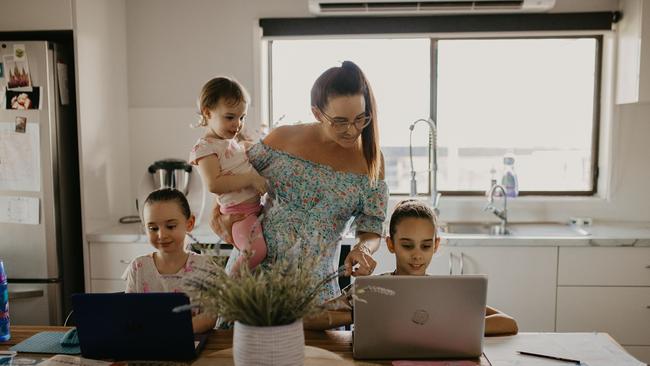Expert strategies to survive homeschool
It takes a virtual village to support families homeschooling throughout the COVID-19 crisis. Here are some simple steps to support families with online learning.

With over 100 million students disrupted by school closures worldwide, education and family life are in upheaval around the globe.
While this is an incredibly challenging time for many families — and the situation is particularly acute for those with limited access to technology and solid support networks — it is also a remarkable opportunity to work together to create a new normal.
Here in Australia we are in a unique position; we can learn from and build on strategies that have worked in countries that are further along in their response.
Schools in China and southeast Asia have been closed for months now, and there are communities there that have found efficient ways to keep kids learning.
Our colleagues at Education Perfect (EP), an online learning platform specialising in personalisation, have been supporting COVID-19 impacted school for the past 3 months. It is clear from their experience that when parents, teachers and students work together, it’s possible to achieve positive wellbeing and learning outcomes.
Success from such co-operation probably seems like a no-brainer. But we know how dauntingit is for a parent or guardian to know how to support students in the transition to home learning, especially when we are mostly confined to the house.
To support your family, we’ve pulled together a set of strategies for supporting your child in a distance learning context.
Here are some of our recommended dos and don’ts.
DO acknowledge that “help” at home means providing support, encouraging, listening, praising, guiding and discussing, however there is no expectation that families will ‘teach’ school subjects.
DON’T feel you have to have all the answers and you can, and should, ask for help from your school leaders and teachers. While they may not have an answer either, they are best positioned to help you create a learning plan that works for your child.
DO communicate regularly with your student’s teacher(s) if you have any questions regarding their learning program. If you do not have reliable internet access or a device for your child, tell the school as they will try to provide a loaner device and learning materials that can be done offline or through a smartphone.
DO ask your child what they need to complete their learning successfully at home. We also suggest stocking up on a few essentials like post-it notes, coloured pencils, highlighters, unlined and lined paper, and pens/pencils (no need for toilet paper).
DO create a separate ‘learning’ space within your home that they can make their own. Whether it is portable, shared or private, creating a dedicated space will contribute to a sense of normalcy and routine for your child. When they are in their space learning is “switched on”.
DO familiarise yourself with your student’s learning program, so you can get a sense of how much they should be doing each day for each subject. Prepare a timetable so that your students can maintain a routine.
DO limit screen time. For primary aged kids, we suggest limiting screen time to 3 hours spread across a day. For secondary students, their screen time requirements will go up, so it will be important to encourage time away from the computer. Building physical activity into every day will help with breaking up screen time, alleviating boredom and increasing engagement.
DO give precedence to the social-emotional health and wellbeing of your child. Regular and consistent feedback is key to understanding a students’ experience, which we’ve seen countless times in the hundreds of schools we work with across Australia. This becomes harder, but not impossible to do in a distance learning context. So whether it is your school using Pulse Checks to regularly check in or spending a few minutes every day, giving your child time to express how they are feeling, what is working and what could be improved is a great way to support their wellbeing.
DON’T conflate social distancing with social disconnection. Set up ways for your child to maintain connections to their peers through virtual chats and play dates. Also set up regular time with family members. Start virtual “show and tells” where everyone shares something they have learned that week (adults and children alike).
Finally, we suggest seeing this time at home as an opportunity to do projects you’ve been wanting to do with your child. Whether it is learning how to bake, doing an art project or starting a blog, there are many ways to be creative with your child while building a stronger connection.
We know that every family’s circumstance is different, and that for some, these strategies will not be possible, but our belief is that we can work together to learn from each other and forge stronger connections within our families and communities.
For more resources you can check out our COVID-19 website that includes ready-to-use materials and videos to support your important work at home.
If you are looking for online learning tools, EP is a great place to start. The important thing right now is to stay connected, as it takes a virtual village to support learning in this environment.
Amanda Bickerstaff is CEO of Pivot Professional Learning, a Melbourne-based company specialising in evidence-based insights that support teacher practice. Pivot has worked with over 700 schools across Australia.



